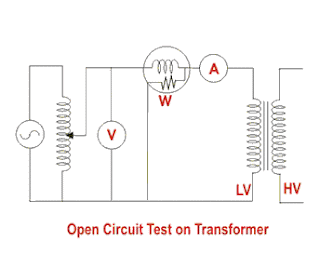Parallel operation of Transformers
Why Parallel Operation of Transformers is required?
It is economical to installe numbers of smaller rated transformers in parallel than installing a bigger rated electrical power transformers. This has mainly the following advantages,
- To maximize electrical power system efficiency:
Generally electrical power transformer gives the maximum efficiency at full load. If we run numbers of transformers in parallel, we can switch on only those transformers which will give the total demand by running nearer to its full load rating for that time. When load increases, we can switch none by one other transformer connected in parallel to fulfill the total demand. In this way we can run the system with maximum efficiency. - To maximize electrical power system availability:
If numbers of transformers run in parallel, we can shutdown any one of them for maintenance purpose. Other parallel transformers in system will serve the load without total interruption of power. - To maximize power system reliability:
If any one of the transformers run in parallel, is tripped due to fault of other parallel transformers is the system will share the load, hence power supply may not be interrupted if the shared loads do not make other transformers over loaded. - To maximize electrical power system flexibility:
There is always a chance of increasing or decreasing future demand of power system. If it is predicted that power demand will be increased in future, there must be a provision of connecting transformers in system in parallel to fulfill the extra demand because, it is not economical from business point of view to install a bigger rated single transformer by forecasting the increased future demand as it is unnecessary investment of money. Again if future demand is decreased, transformers running in parallel can be removed from system to balance the capital investment and its return.
Conditions for Parallel Operation of Transformers
When two or more transformers run in parallel, they must satisfy the following conditions for satisfactory performance. These are the conditions for parallel operation of transformers.
- Same voltage ratio of transformer.
- Same percentage impedance.
- Same polarity.
- Same phase sequence.
Same Voltage Ratio
If two transformers of different voltage ratio are connected in parallel with same primary supply voltage, there will be a difference in secondary voltages. Now say the secondary of these transformers are connected to same bus, there will be a circulating current between secondaries and therefore between primaries also. As the internal impedance of transformer is small, a small voltage difference may cause sufficiently high circulating current causing unnecessary extra I2R loss.
Same Percentage Impedance
The current shared by two transformers running in parallel should be proportional to their MVA ratings. Again, current carried by these transformers are inversely proportional to their internal impedance. From these two statements it can be said that, impedance of transformers running in parallel are inversely proportional to their MVA ratings. In other words, percentage impedance or per unit values of impedance should be identical for all the transformers that run in parallel.
Same Polarity
Polarity of all transformers that run in parallel, should be the same otherwise huge circulating current that flows in the transformer but no load will be fed from these transformers. Polarity of transformer means the instantaneous direction of induced emf in secondary. If the instantaneous directions of induced secondary emf in two transformers are opposite to each other when same input power is fed to both of the transformers, the transformers are said to be in opposite polarity. If the instantaneous directions of induced secondary emf in two transformers are same when same input power is fed to the both of the transformers, the transformers are said to be in same polarity.
Same Phase Sequence
The phase sequence or the order in which the phases reach their maximum positive voltage, must be identical for two parallel transformers. Otherwise, during the cycle, each pair of phases will be short circuited.
The above said conditions must be strictly followed for parallel operation of transformers but totally identical percentage impedance of two different transformers is difficult to achieve practically, that is why the transformers run in parallel may not have exactly same percentage impedance but the values would be as nearer as possible.
The above said conditions must be strictly followed for parallel operation of transformers but totally identical percentage impedance of two different transformers is difficult to achieve practically, that is why the transformers run in parallel may not have exactly same percentage impedance but the values would be as nearer as possible.









No comments:
Post a Comment